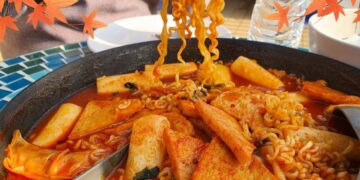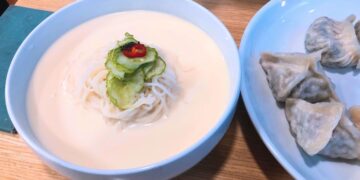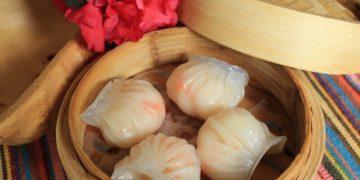Last Updated on 8 months by admin
Culinary scene in Seoul has garnered international acclaim, with four of its restaurants securing spots on Asia’s 50 Best Restaurants list.
Four restaurants in Korea have made their place in the 2025 Asia’s 50 Best Restaurants list. The live ceremony was held on Tuesday night at Grand Hyatt Seoul in Yongsan District, central Seoul. Bangkok and Tokyo are at the top with nine entries each, followed by Hong Kong with seven. Seven new restaurants are on the list, and there are 16 cities represented in total.
Seoul’s culinary scene is thriving, with restaurants like Mingles (ranked 5th), Onjium (10th), 7th Door (23rd), and the newbie Eatanic Garden (25th) taking the city by storm. Eatanic Garden even won the Highest New Entry Award in the Asia’s 50 best restaurants in Seoul! Chef Jongwon Son’s menu is a delightful blend of Korean botanicals, fermentation, and a serene atmosphere that sets it apart from the city’s growing culinary landscape.
Mingles – at #5
Mingles, a Korean restaurant that opened in Seoul’s trendy Cheongdam-dong district in April 2014, has been a hit with both locals and tourists. They serve delicious Korean food that combines flavors from Hong Kong and Europe. In 2025, Mingles was named the best restaurant in Korea, thanks to Korean Air. They’re known for using unique local ingredients like acorn jelly and bellflower root. The restaurant’s chef, Mingoo Kang, wants to show people a new way to enjoy Korean food.
Chef Mingoo Kang and the Mingles team are on a mission to create a new way of eating Korean food. They use fresh, local fish, meat, and veggies, and they add traditional Korean fermented sauces and vinegars. This is a great way to try new ingredients like acorn jelly and bellflower root.
It has been awarded with 3 Stars in the MICHELIN Guide Seoul & Busan 2025, thanks to Chef Kang Mingoo’s keen eye for detail with warm minimalism.
Eatanic Garden – at #25
Nestled high above the bustling streets of Seoul, at the 36th floor of Josun Palace, lies Eatanic Garden. It’s a culinary haven where nature and gastronomy intertwine. In Korean, the restaurant’s name cleverly uses the homophony between “Eatanic Garden” and “botanic garden.” Instead of a regular menu, guests get a beautifully illustrated card for each course. This way, chef Son Jong-won can create dishes that change with the seasons. The natural theme will shine through in every dish on the tasting menu. They’ve taken classic Korean dishes and put their own spin on them, like their hanwoo beef three-ways with fermented cauliflower and snowflake-shaped white winter vegetables.
Josun Palace’s Eatanic Garden has also been recognized with another Michelin star, making it the third year in a row! This prestigious award comes from the ‘MICHELIN Guide Seoul & Busan 2025.’
Onjium – at #10
‘Onjium’ in Korean refers to “creating in the right way”. The restaurant is popular for dishes that come from researching old recipe books that have been around for centuries. After all, this restaurant is part of an institute that has been studying Korean heritage since 2013. The kitchen, led by chefs Eun-hee Cho and Sung-bae Park, uses fresh ingredients in dishes that are made according to recipes that have been changed and improved over the years.
7th Door – at #23
The 7th Door is a Korean restaurant with fundamentals in traditional Korean cuisine, meaning fermentation and aging. Dining at this restaurant is like a culinary journey where chef Dae-chun Kim combines his love for traditional Korean cooking with his passion for fresh, unique ingredients and modern techniques. Kim wants to take you on a taste adventure, exploring the seven flavors of food, including the five basic senses, fermentation, and the chef’s special way of highlighting the best of Korea’s ingredients.
Related Posts
4,538 total views, 9 views today

















